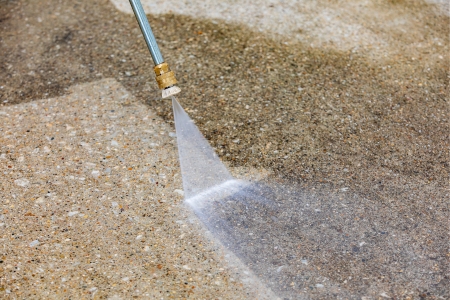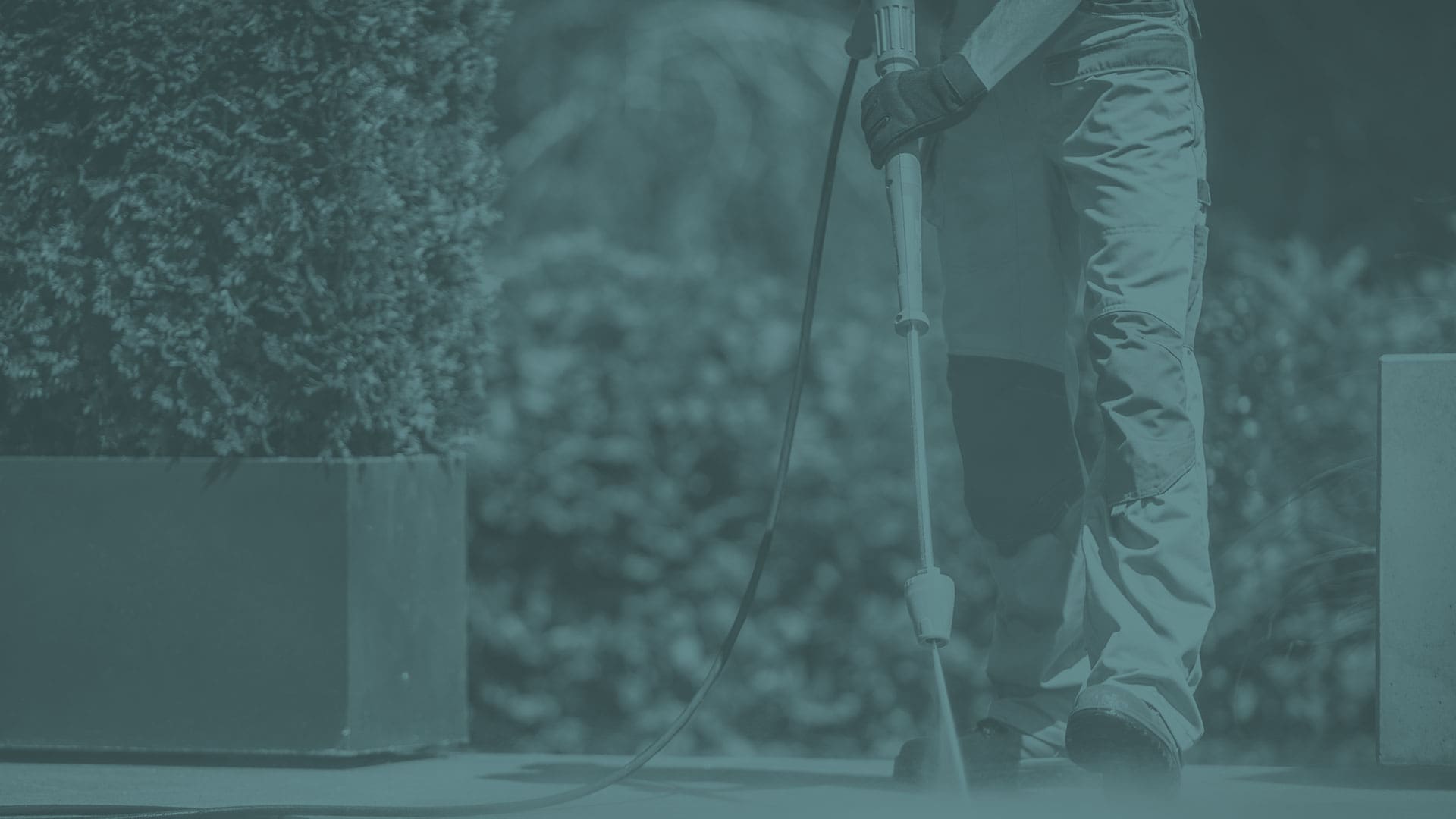The Art of Pressure Washing: How to Properly Clean Your Driveway

Hello there, DIY enthusiasts! I'm here to share some valuable insights as a seasoned Orlando pressure washing expert on one of the most common outdoor projects: cleaning your driveway. Pressure washing can be a satisfying and cost-effective way to revitalize your home's exterior, but it's essential to do it right. Today, I'll guide you through the process and emphasize the importance of not using too much pressure.
Why Pressure Wash Your Driveway?
Before diving into the nitty-gritty details, let's briefly discuss why you might want to pressure wash your driveway in the first place:
- Curb Appeal: A clean driveway instantly boosts your home's curb appeal, making it more inviting and visually appealing.
- Safety: A slippery, algae-covered driveway can be a safety hazard. Annual cleanings will helps prevent accidents. Pressure alone will not kill algae. If longer lasting results are desired, considered a cleaning product designed to remove organic growth.
- Longevity: Proper maintenance extends the life of your driveway, saving you money on costly repairs or replacements. If you land on cleaning your own driveway, you must be certain you are not over-applying pressure to the concrete.
Now, let's get down to the business of pressure washing, focusing on the right techniques to ensure a clean, safe, and long-lasting driveway.
Choosing the Right Equipment
The first step to a successful driveway cleaning project is selecting the right pressure washer. You'll want a machine with an adjustable pressure setting, ideally between 2000 to 3000 PSI (pounds per square inch) for most driveway jobs. Most commercially available pressure washers from the big box stores will come with the appropriate nozzles/ tips for that machine. Be aware, that using the wrong tip too close to any surface will artificially increase pressure at that particular point. Higher pressure isn't necessarily better; in fact, using too much pressure can damage the surface. See my blog post "Can Pressure Washing Hurt Concrete?"
Safety First
Before you begin, put on safety gear, including safety glasses and hearing protection. Pressure washers can be loud, and debris may fly around during the process. Always be careful when pressure washing around plants, plant pots, rock and other loose debris than can be carried away by the strong, pressurized blast of water.
Preparation
Clear the Area: Remove any obstacles, vehicles, or items from your driveway. Trim the edges of the grass and re-arrange landscape to keep driveway clear. There’s nothing worse than having a big plume of dirt and mud shoot up at you by mistake.
Pre-soak: To break up stubborn dirt and grime, apply a detergent specifically designed for pressure washing. Allow it to sit for about 10-15 minutes but avoid letting it dry on the surface.
The Right Technique
Now, the most critical part of this process: the right technique. Remember, using too much pressure can lead to damage.
Keep Your Distance: Maintain a distance of at least 6-12 inches between the nozzle and the surface. Start with the nozzle at a 45-degree angle to the driveway. Many people will opt to put the high-pressure nozzle right next to the concrete in an attempt to get that last little bit of stuff. Bad idea.
Even Sweeping Motions or Use a Surface Cleaner: Use slow, even sweeping motions to avoid leaving streaks or lines. Move the nozzle back and forth, overlapping each pass slightly. The most effective way to clean a driveway is to use a surface cleaner. While people may call it a “scrubber” its bristles do not actually do anything other than stop you from getting too wet. It uses rotating water jets that spin rapidly in a circle. Sounds cool, but take note, now these jets are hovering about an inch or so from the surface of your concrete. If you can, adjust the pressure coming from your machine. Most ‘consumer’ grade surface cleaners will not be adjustable. Never linger in one spot for too long. Prolonged exposure to high pressure can erode the surface.
Rinse and Post-Clean Up
After you've successfully removed the dirt and grime, it's time to rinse the surface. Use clean water and the same sweeping motion as before to remove any remaining detergent and debris.
Maintenance Tips
Regular Maintenance: Make driveway cleaning a part of your annual maintenance routine to prevent heavy buildup. Maintenance also extends to the pressure washer itself. Both gasoline and electric powered pumps should be drain of water and fuel and a product that coat the inside of the pump should be used. Pump are intricate, mechanical parts that need to be used.
When not used, they can and will eventually seize. In addition to that, gasoline engines will need to be either completely drained of gasoline and oil, or else damage can occur during storage. Gasoline will not make it to the next yearly cleaning until fouling/ ruining your carbureted engine. The engine oil will degrade, separate out and accumulate water/moisture over time. Many people will spend hard earned cash on a top-of-the-line pressure washer from the store, only to find it won’t start the next year.
A Cautionary Note: Consider Softwashing as an Alternative
While pressure washing is an effective method for cleaning driveways, there's an alternative technique that's gaining popularity in recent years – softwashing. Softwashing is a tried-and-true method that can be especially beneficial for certain types of surfaces and situations. Let's take a moment to explore why you might want to consider softwashing:
- Delicate Surfaces: Some driveways are more delicate than others, such as pavers, new virgin concrete and concrete with designs and inlays, ETC. High-pressure washing can potentially cause damage or leave behind unsightly marks. Softwashing utilizes lower pressure, making it a gentler option for these surfaces and many others.
- Stains and Algae: Softwashing is particularly effective at removing organic stains, algae, mold, and mildew. It uses specialized detergents and a lower-pressure, high volume stream to break down and remove these types of contaminants.
- Eco-Friendly: Softwashing typically requires less water compared to high-pressure washing, making it an eco-friendly choice. It's a more sustainable option for the environment. The cleaning solution used is also bio-degradable.
- Long-Lasting Results: Softwashing often delivers longer-lasting results since it eliminates the root cause of many stains and organic growth, helping to prevent them from returning as quickly.
- Professional Expertise: Softwashing may require a bit more expertise and specialized equipment than pressure washing. Consider hiring a professional softwashing service to ensure your driveway gets the care it deserves.
In Conclusion
While pressure washing remains a valuable tool for many types of cleaning, it's important to choose the right method for your specific needs. Softwashing is a fantastic alternative, especially when dealing with delicate surfaces, stubborn stains, or if you're looking for a more eco-conscious approach.
Before embarking on your driveway cleaning project, take the time to assess your surface and its unique requirements. Whether you opt for pressure washing or softwashing, the goal remains the same: a clean, safe, and beautiful driveway that enhances your home's curb appeal and longevity.

Schedule Quality Pressure Washing In Orlando & The Surrounding Areas Today!